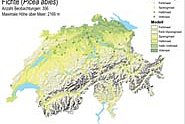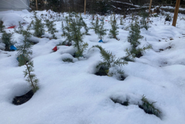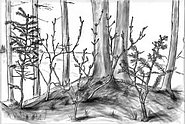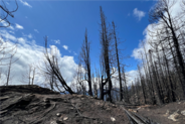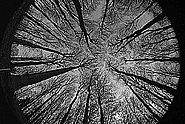Climate change is expected to significantly alter forest ecosystems, reducing the suitability of the key economic tree species Norway spruce (Picea abies) and European beech (Fagus sylvatica) in low- and mid-elevation forests of Central Europe. As these species face increasing pressures from drought, storms, and pests, it is crucial to identify alternative tree species that are economically viable and capable of maintaining primary ecosystem services. This study investigated the potential of Douglas fir (Pseudotsuga menziesii), a non-native conifer, to establish from seed and compete with native broadleaf and conifer species during the early regeneration stage under differing resource availabilities. We assessed the growth performance and phenotypic plasticity of Douglas fir seedlings over three years in a controlled common-garden experiment. Seedlings of Douglas fir, along with seven native species — Norway spruce, silver fir (Abies alba), Scots pine (Pinus sylvestris), European beech, pedunculate oak (Quercus robur), sessile oak (Q. petraea), and sycamore (Acer pseudoplatanus) — were grown for three years under factorial combinations of high and low availabilities of light, nutrients, and water. Seedling height, biomass allocation to shoots and roots and phenotypic plasticity of these traits were measured to evaluate the competitive ability of individual species and their potential to adapt to changing environmental conditions. While Douglas fir seedlings exhibited strong growth performance compared to the conifers Norway spruce and silver fir, their biomass production and height growth was considerably lower than that of the broadleaved sycamore and beech. However, Douglas fir’s height growth rate in the third year exceeded all species except sycamore. This was particularly pronounced under dry and/or nutrient-poor conditions, indicating a potential competitive advantage under expected future climatic conditions. In agreement with field studies, our results indicate that non-native Douglas fir may sustainably establish in dry, nutrient poor European lowland forests due to its superior early growth performance under these conditions and the high phenotypic plasticity, of its root system. This holds especially in situations where the species competes with other conifers, while its ability to successfully compete with broadleaves appears to be largely restricted to nutrient-poor sites.
Siehe DOISiehe Institutional Repository DORA

